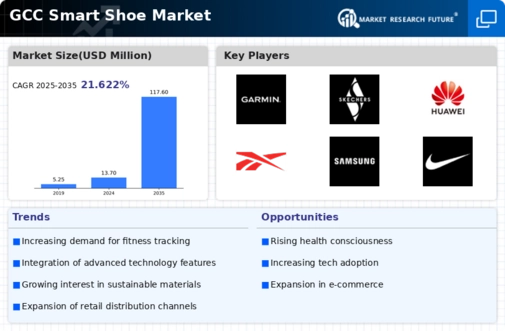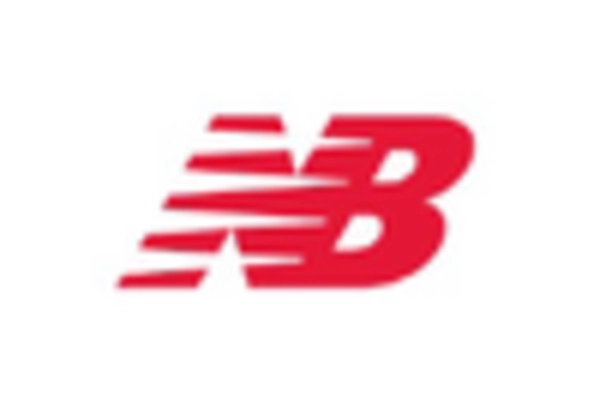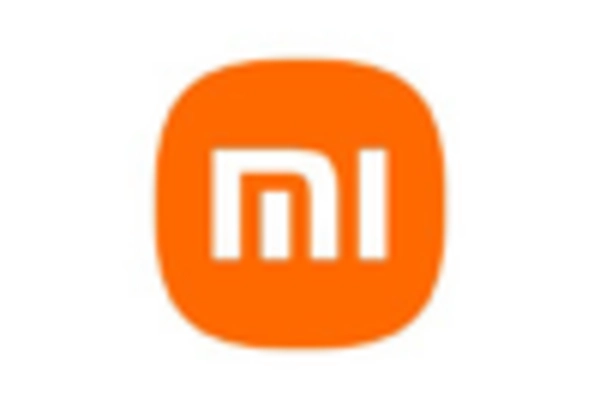Growing E-commerce Adoption
The surge in e-commerce adoption across the GCC region is reshaping the retail landscape, particularly for the smart shoe market. As consumers increasingly turn to online platforms for their shopping needs, brands are capitalizing on this trend by offering smart shoes through various digital channels. The convenience of online shopping, coupled with targeted marketing strategies, is likely to enhance product visibility and accessibility. Recent statistics indicate that e-commerce sales in the GCC are projected to reach $25 billion by 2026, suggesting a robust growth trajectory. This shift towards online retail is expected to facilitate the expansion of the smart shoe market, as consumers seek to explore and purchase innovative footwear from the comfort of their homes.
Increased Disposable Income
The rise in disposable income among consumers in the GCC region is contributing to the growth of the smart shoe market. As individuals experience higher purchasing power, they are more inclined to invest in premium products that offer advanced features and benefits. The luxury segment of the footwear market is expected to expand, with smart shoes being perceived as a blend of style and functionality. Data suggests that the average disposable income in the GCC has increased by approximately 10% over the past few years, leading to a greater willingness to spend on innovative footwear solutions. This trend indicates that the smart shoe market is likely to thrive as consumers seek products that align with their lifestyle aspirations.
Rising Health Consciousness
The increasing awareness of health and fitness among consumers in the GCC region appears to be a primary driver for the smart shoe market. As individuals seek to monitor their physical activity and overall well-being, smart shoes equipped with health tracking features are gaining traction. The market data indicates that the demand for wearable health technology is projected to grow at a CAGR of approximately 15% over the next five years. This trend suggests that consumers are willing to invest in innovative footwear that not only provides comfort but also enhances their fitness journey. Consequently, the smart shoe market is likely to benefit from this shift towards health-oriented products, as more individuals prioritize their health and fitness goals.
Technological Advancements in Footwear
The rapid pace of technological innovation in the footwear industry is significantly influencing the smart shoe market. With advancements in materials and embedded technology, manufacturers are now able to create shoes that offer enhanced functionality, such as real-time performance tracking and adaptive fit. The integration of sensors and connectivity features allows users to connect their shoes to mobile applications, providing valuable insights into their activity levels. Market analysis suggests that the smart shoe segment could account for up to 20% of the overall footwear market in the GCC by 2027. This indicates a growing consumer preference for technologically advanced products, which is likely to drive further investment and development in the smart shoe market.
Focus on Sustainability and Ethical Practices
The growing emphasis on sustainability and ethical practices within the GCC region is influencing consumer preferences in the smart shoe market. As awareness of environmental issues rises, consumers are increasingly seeking products that align with their values. Brands that prioritize sustainable materials and ethical manufacturing processes are likely to attract a more conscientious customer base. Industry expert's suggest that approximately 30% of consumers in the GCC are willing to pay a premium for eco-friendly products. This trend indicates a potential shift in purchasing behavior, where consumers may favor smart shoes that not only offer advanced technology but also contribute positively to the environment. Consequently, the smart shoe market may see a rise in demand for sustainable options.
















Leave a Comment